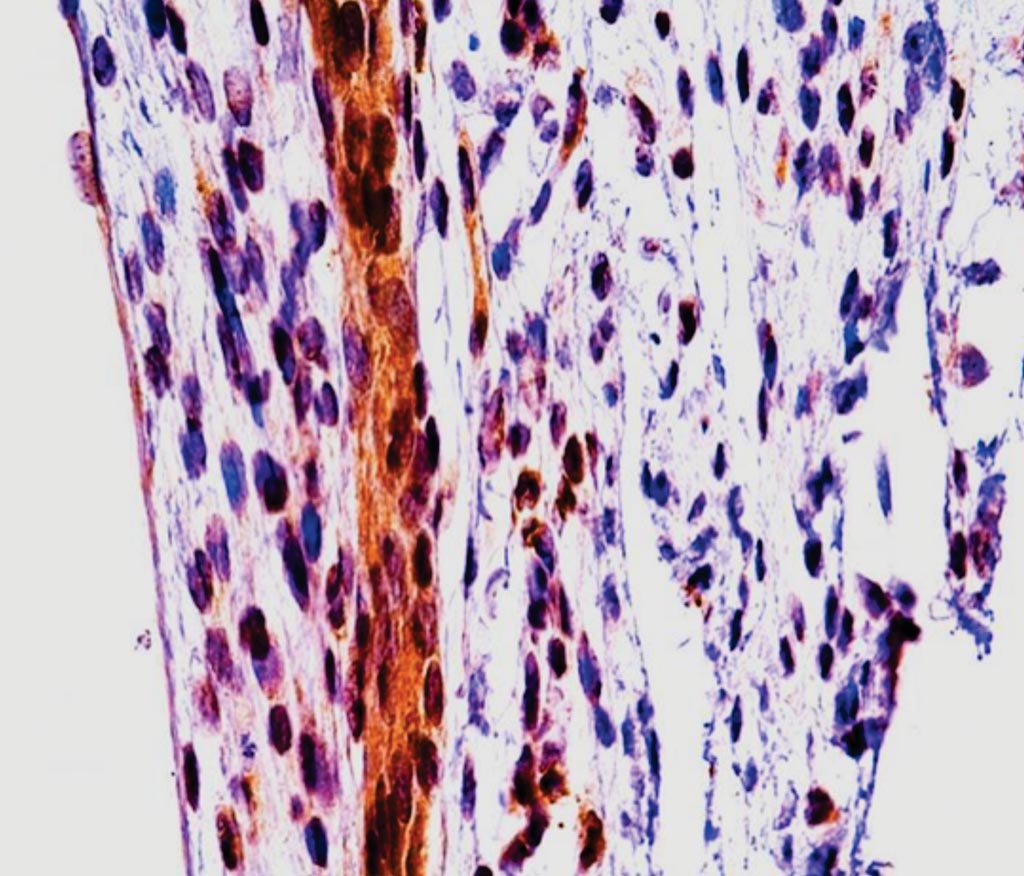Diagnostic Test Identified for Pediatric Biliary Atresia
By LabMedica International staff writers
Posted on 05 Dec 2017
Biliary atresia is a rare disease of the liver and bile ducts that occurs in infants. Liver cells produce bile, which helps digest fat and carries waste products from the liver to the intestines. When an infant has biliary atresia, this flow is blocked and bile becomes trapped inside the liver, quickly causing liver damage and eventually liver failure.Posted on 05 Dec 2017
Early diagnosis and prompt surgical intervention are the best predictors of treatment success, but current diagnostic methods are time-consuming and imprecise. Part of the challenge is biliary atresia has several potential causes, such as viruses, environmental toxins and a dysregulated immune system.

Image: A histological section showing a obstructed extrahepatic bile duct. It exhibits residual expression of the enzyme called MMP-7 (shown in brown) (Photo courtesy of Cincinnati Children\'s Hospital Medical Center).
An international team of scientists led by those at Cincinnati Children's Hospital Medical Center (Cincinnati, OH, USA) analyzed the blood of 70 biliary atresia patients to identify proteins that are significantly elevated when the disease is progressing. To do this, they performed a large-scale proteomics analysis-essentially a search among over 1,000 proteins and their levels found in patients' blood. The lead biomarker they identified is matrix metalloproteinase-7 (MMP-7), an enzyme that breaks down tissues and is implicated in several disease processes.
When the team tested the diagnostic effectiveness of MMP-7 on its own, it had 97% sensitivity and 91% specificity for biliary atresia. Combining the use of MMP-7 with another blood test that is currently available, γ-glutamil transpeptidase (GGT) further increased the diagnostic accuracy and decreased the risk of misdiagnose prior to the surgical intervention. The scientists used human tissue and an experimental model of biliary atresia, and they found that MMP-7 is primarily expressed by cholangiocytes, released upon epithelial injury, and promotes the experimental disease phenotype.
Jorge Bezerra, MD, the lead investigator and director of Gastroenterology, Hepatology and Nutrition, said, “From a broad screen of over 1,000 proteins, we found a unique protein associated with biliary atresia. Testing this protein as a diagnostic biomarker in two additional groups of babies to validate accuracy, it passed with flying colors. These findings have real implications for the diagnosis and care of these babies.”
The authors of the study propose that serum MMP-7, alone or in combination with GGT, is a diagnostic biomarker for biliary atresia and may serve as a therapeutic target. The study was published on November 22, 2017, in the journal Science Translational Medicine.
Related Links:
Cincinnati Children's Hospital Medical Center













